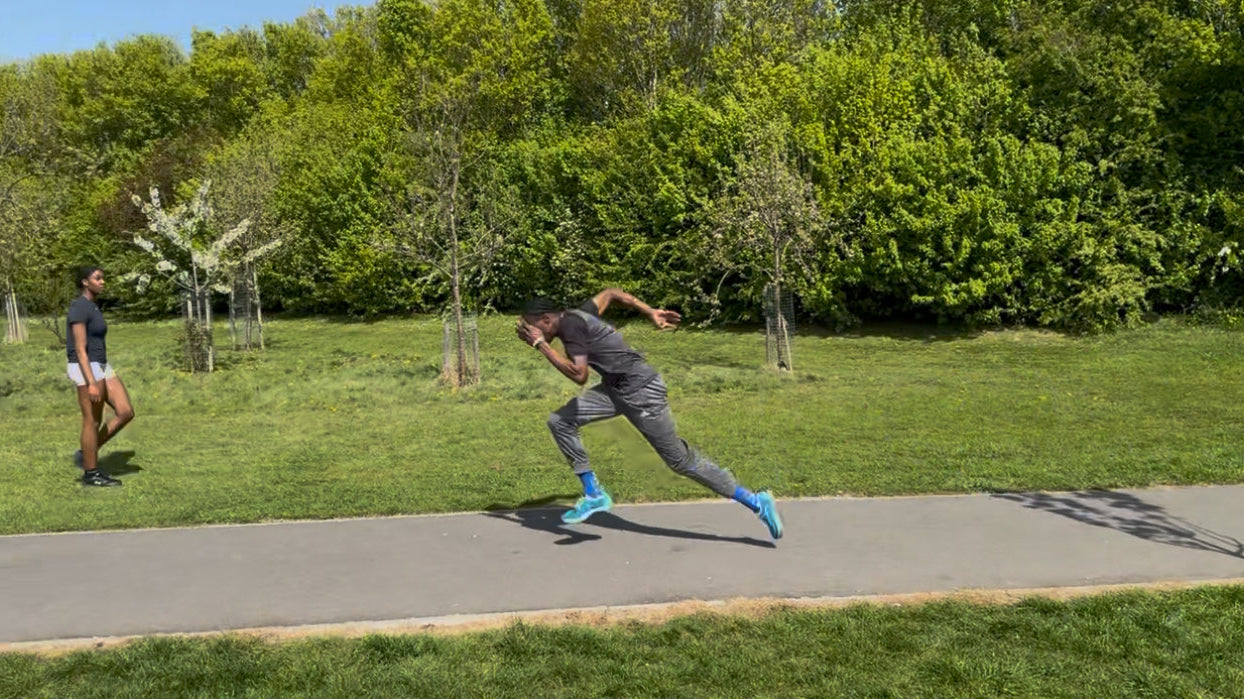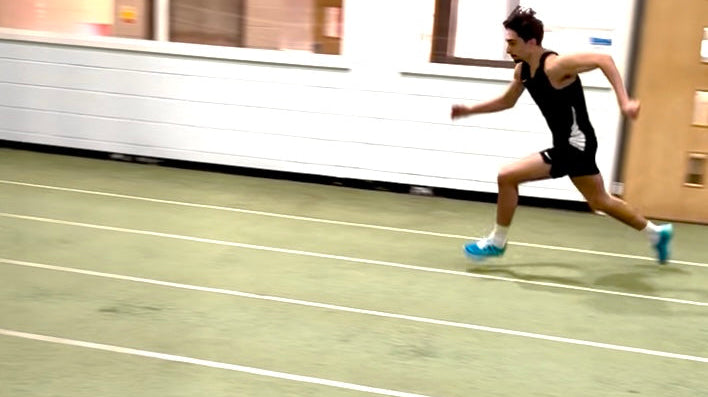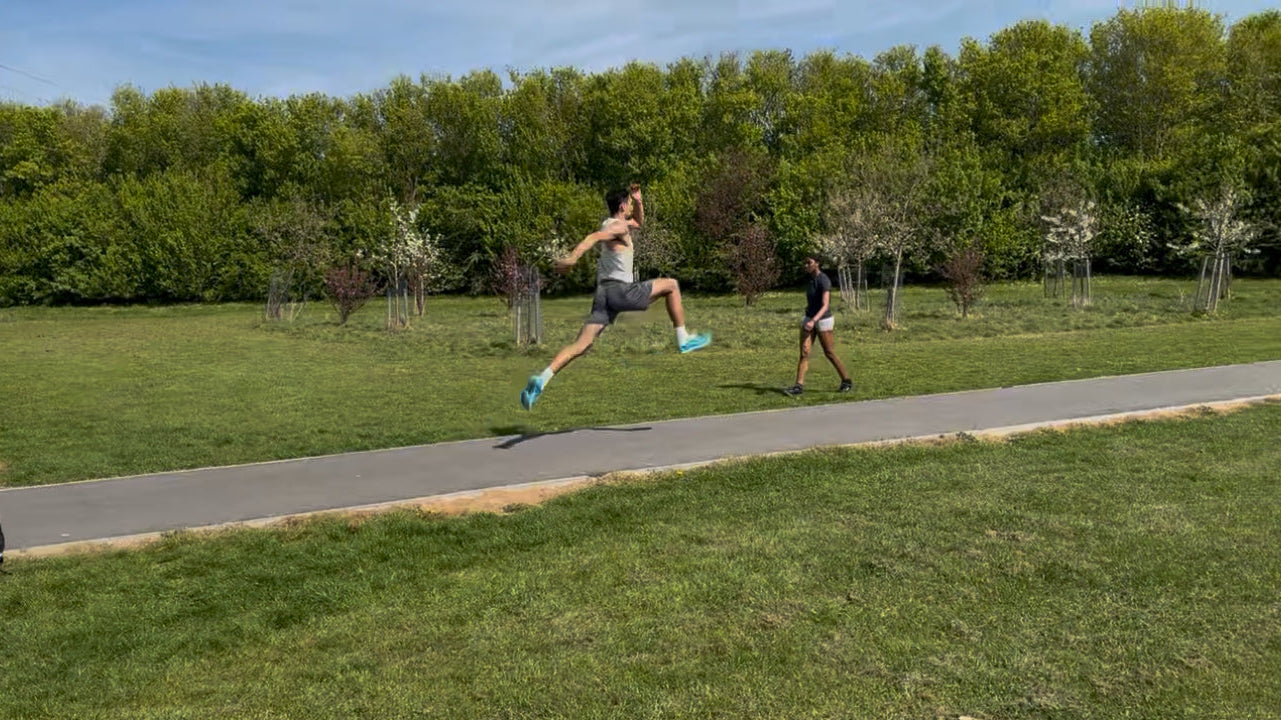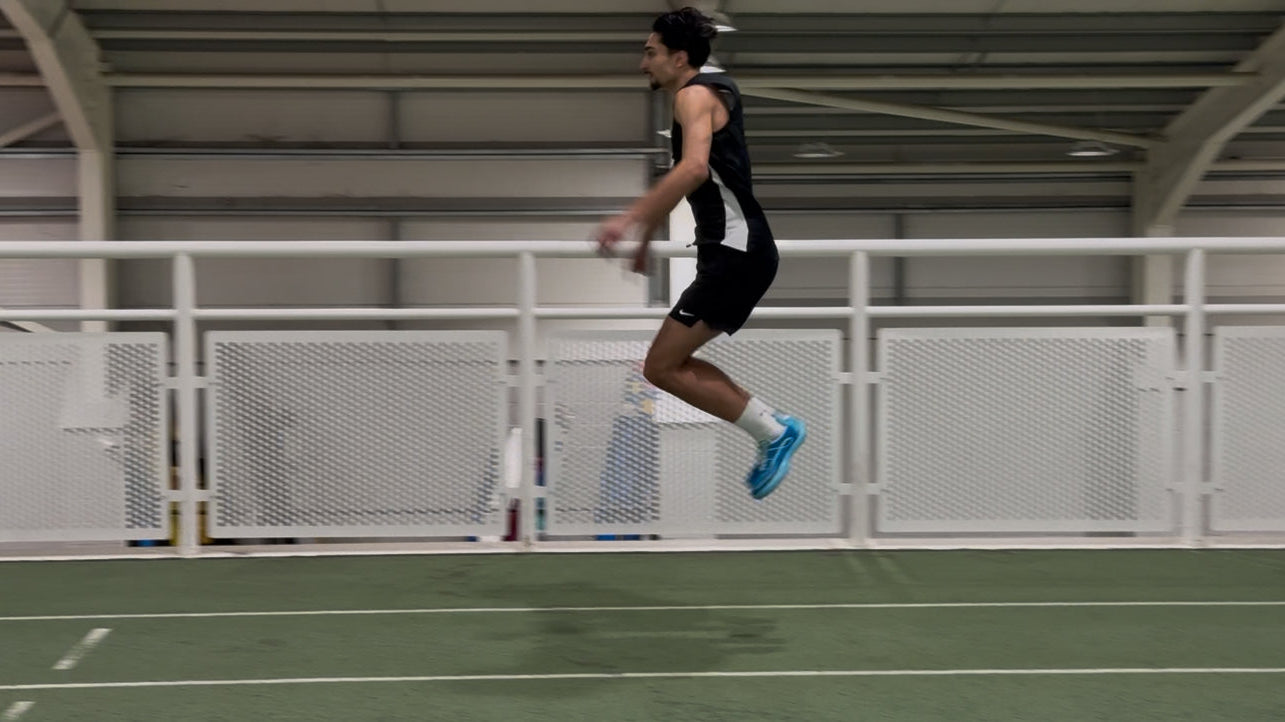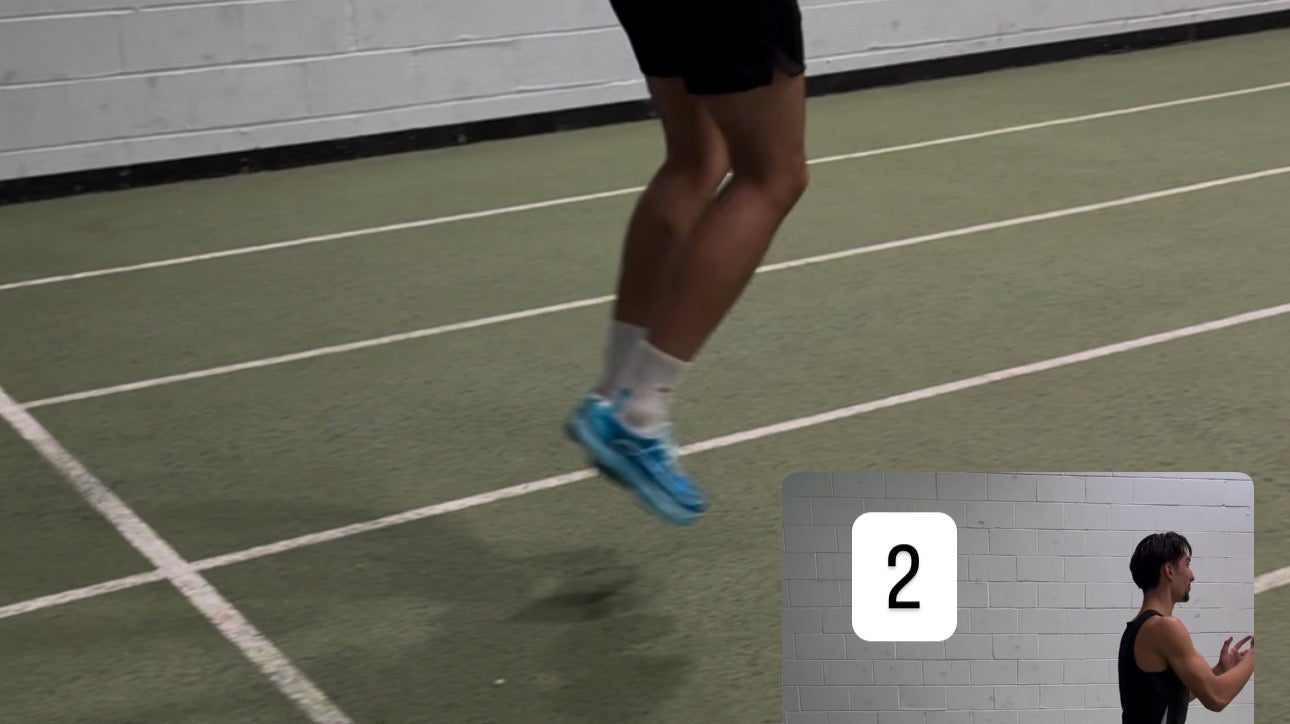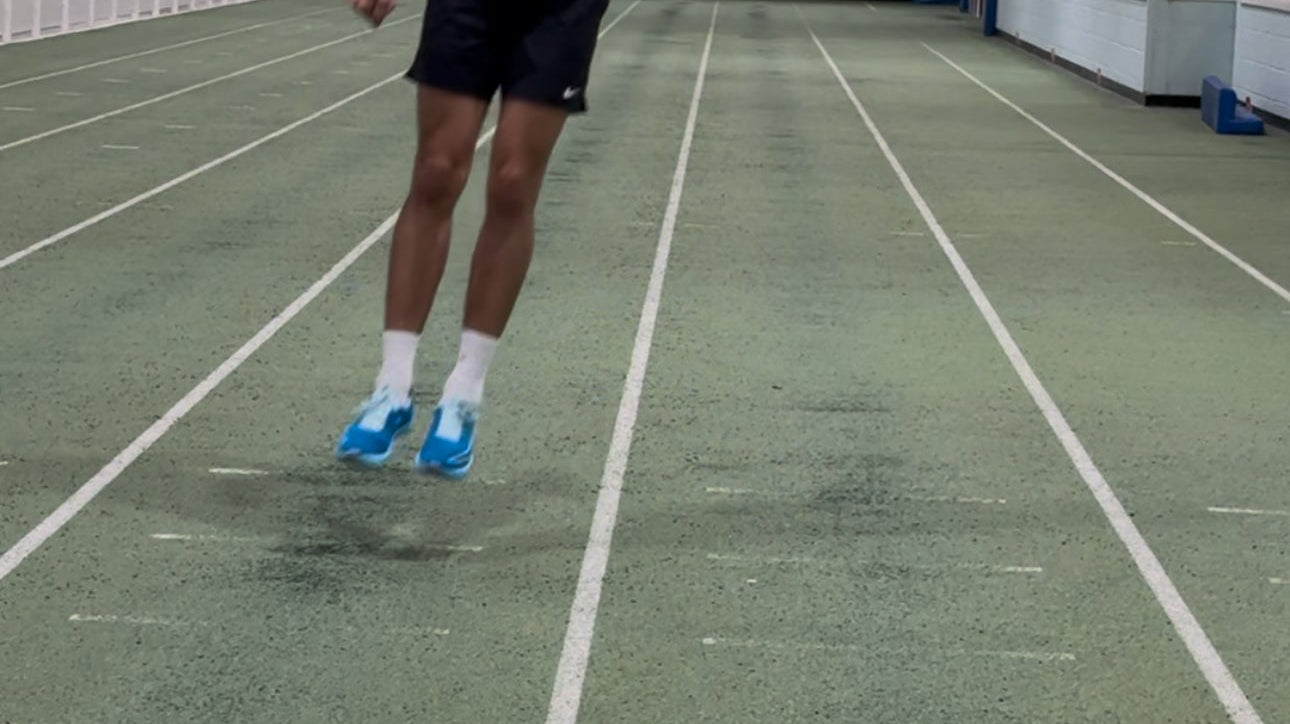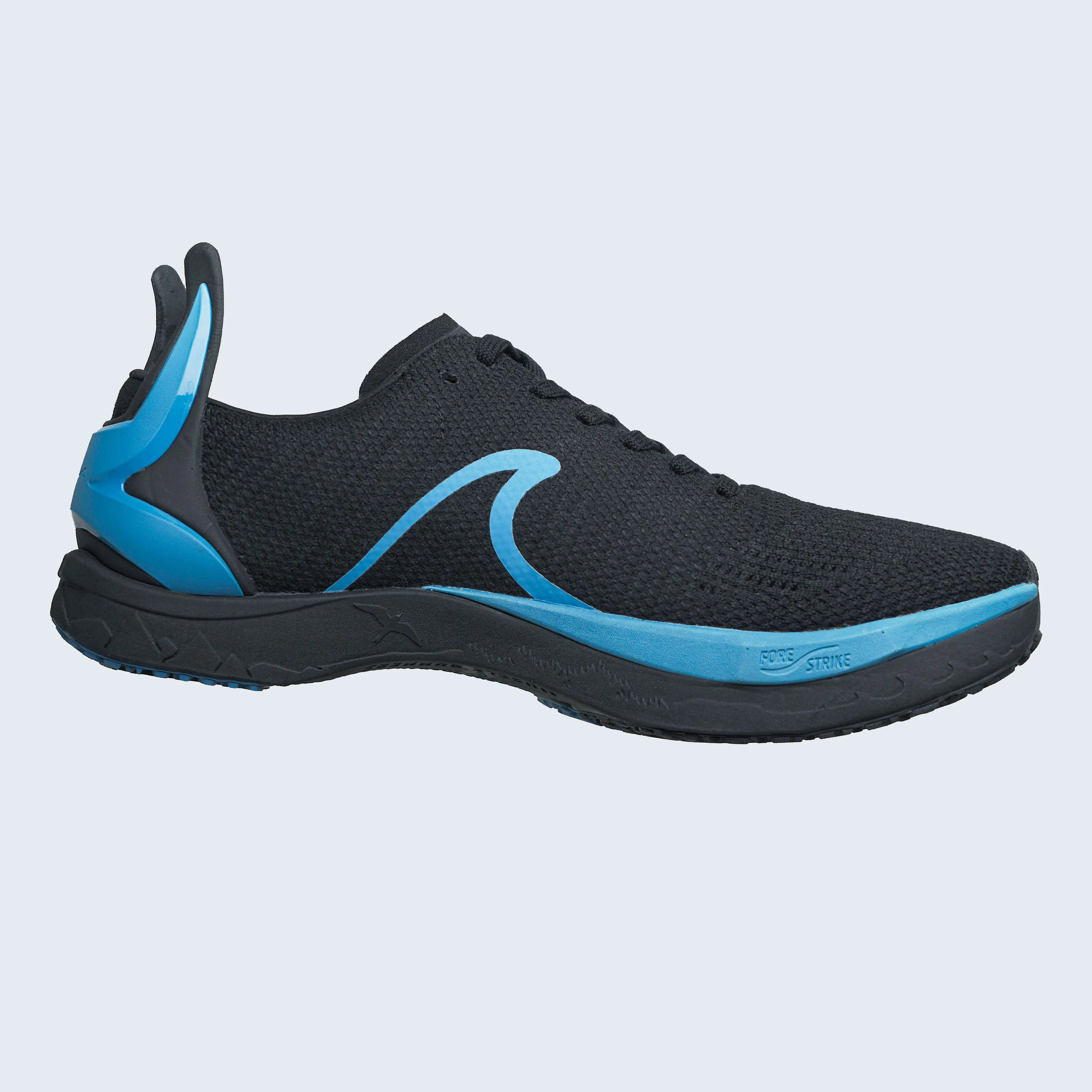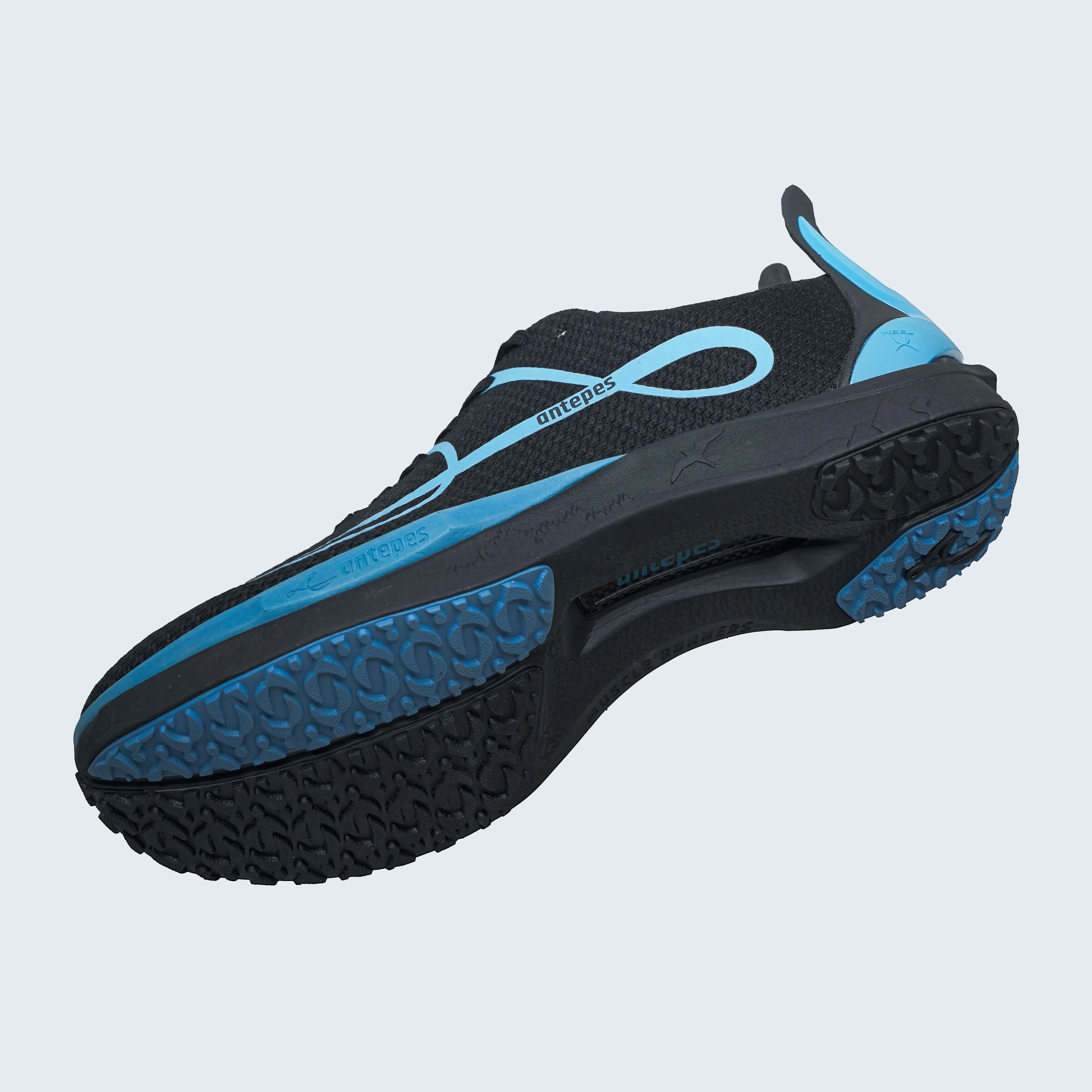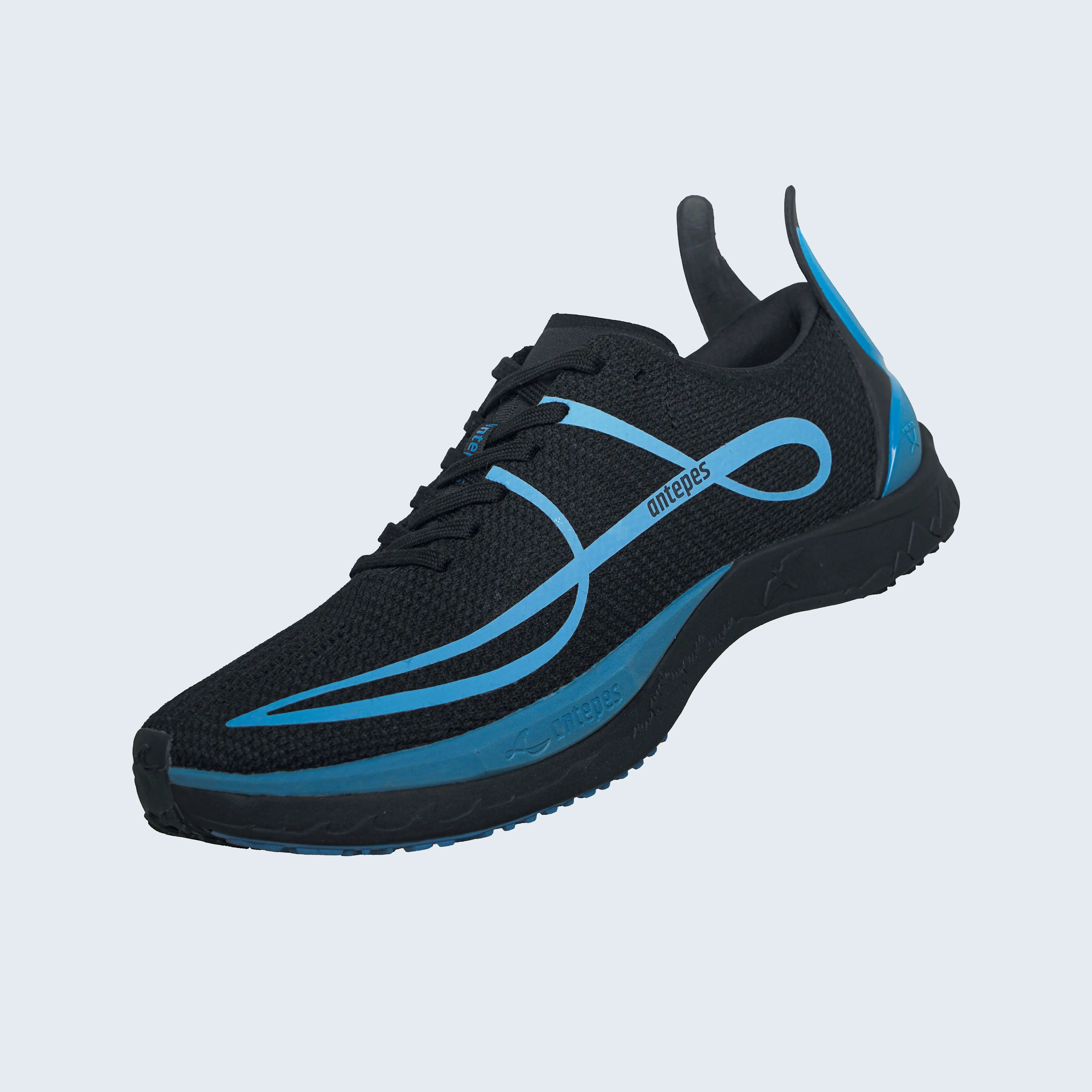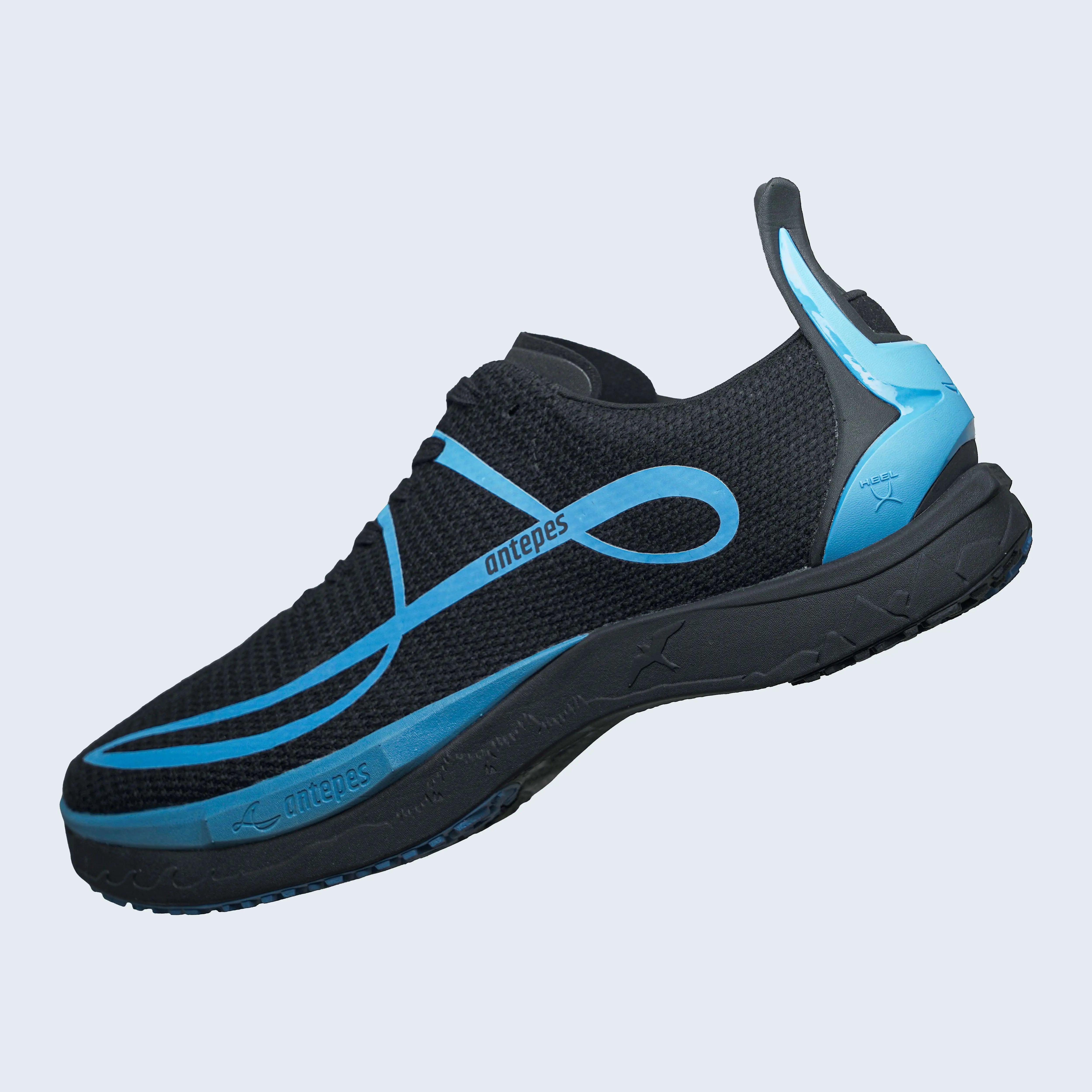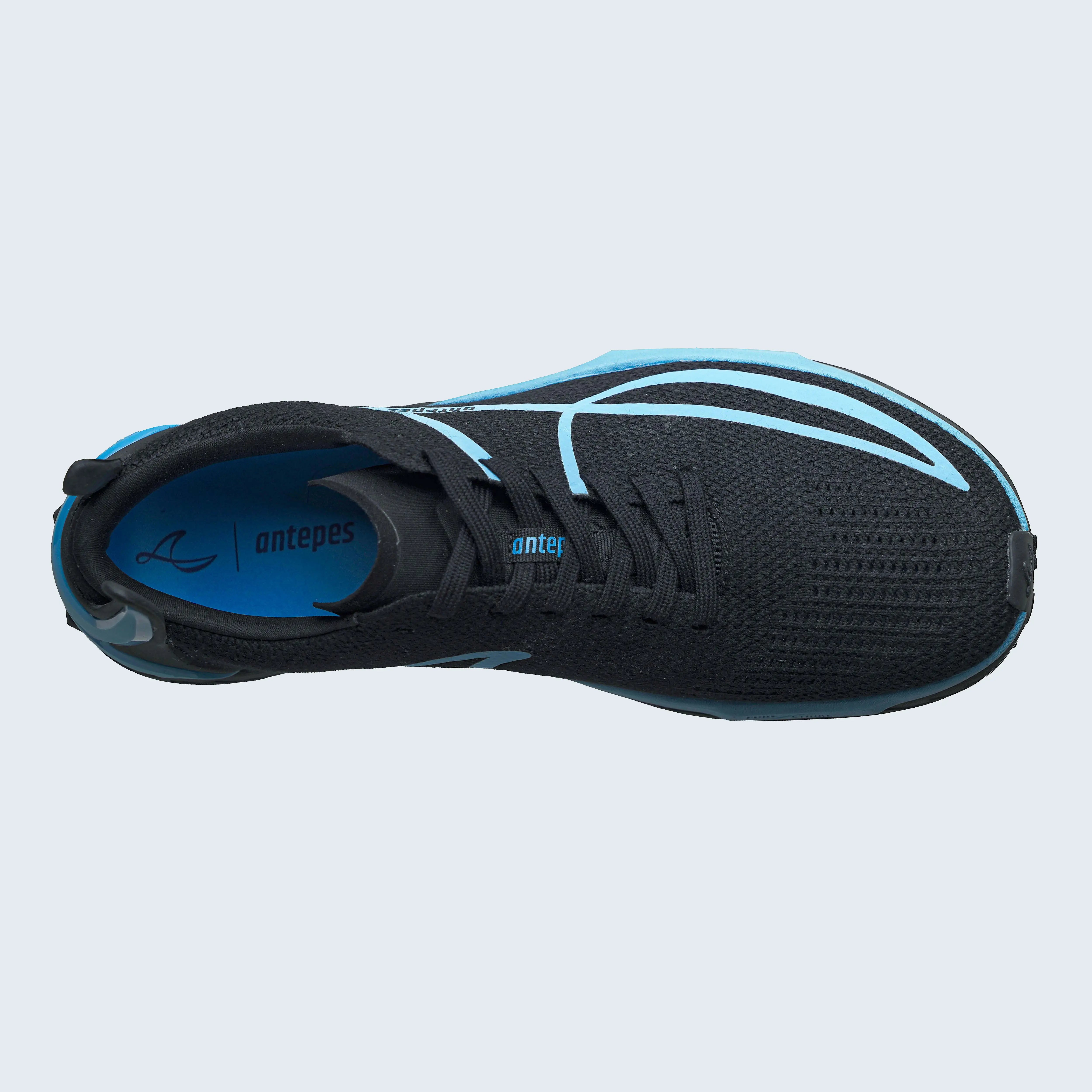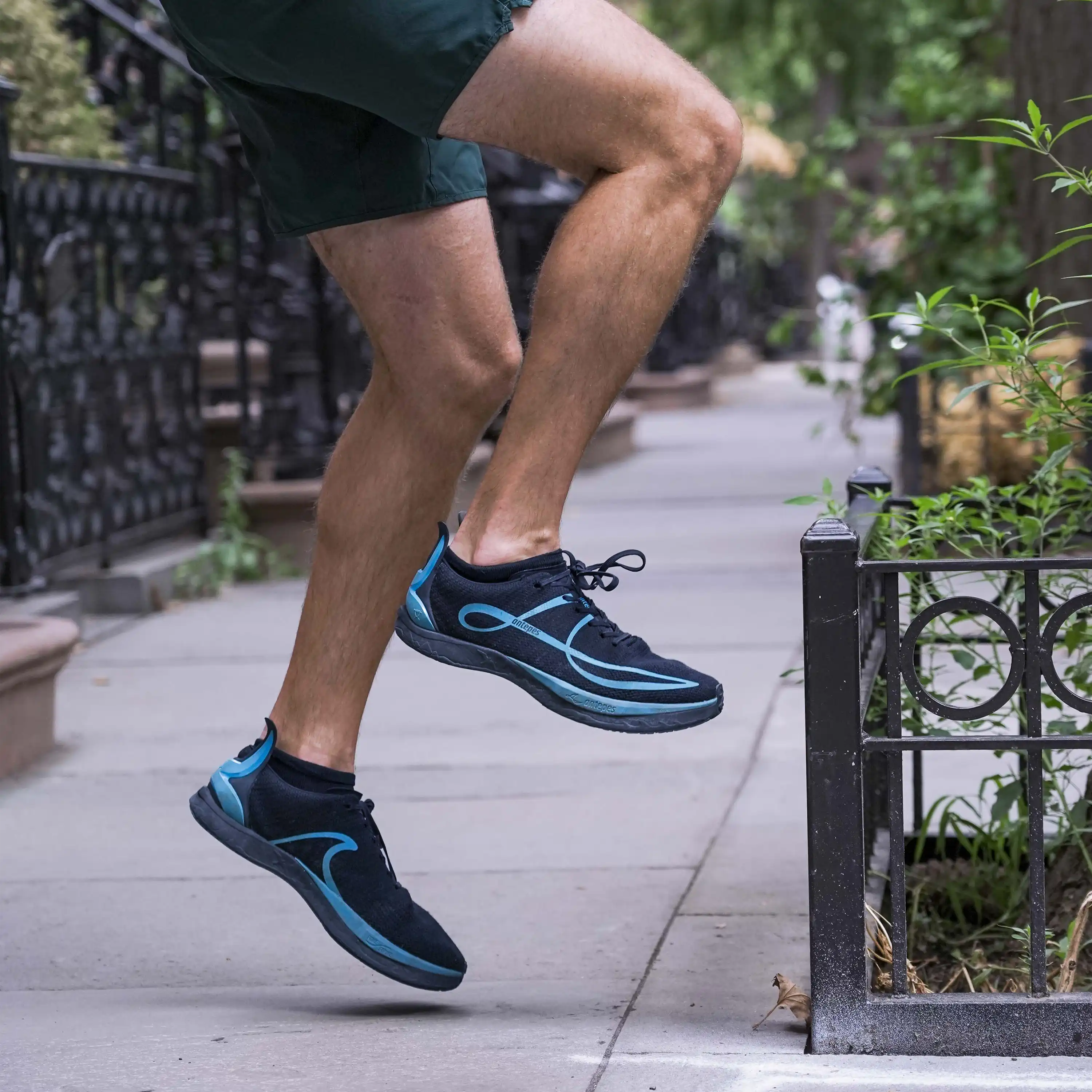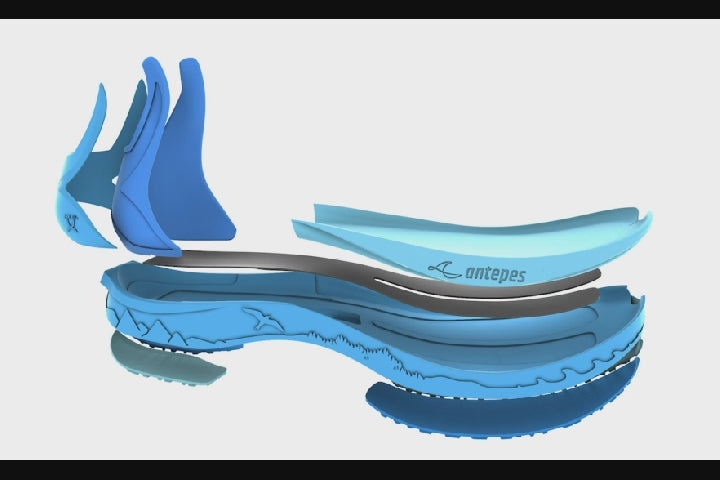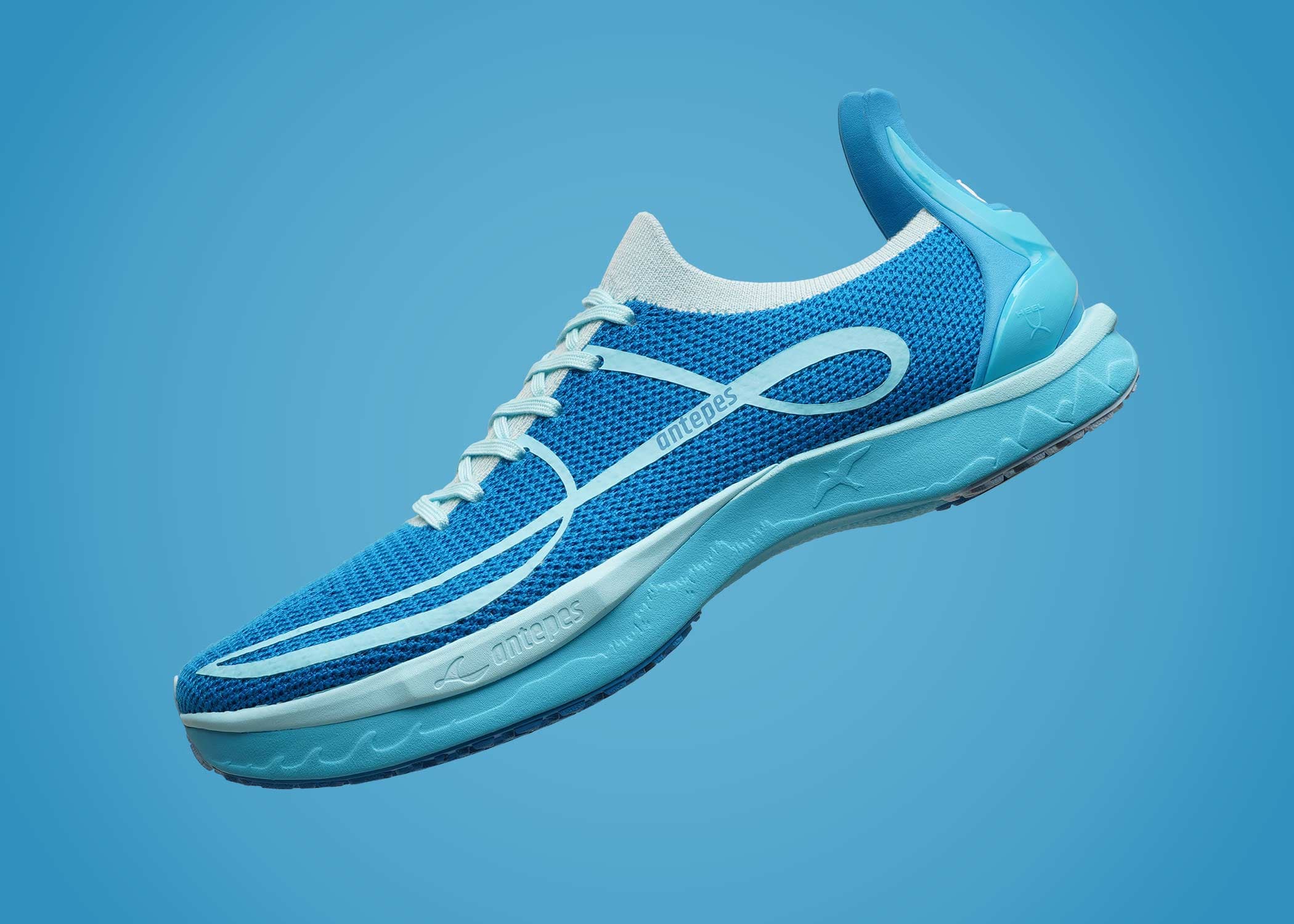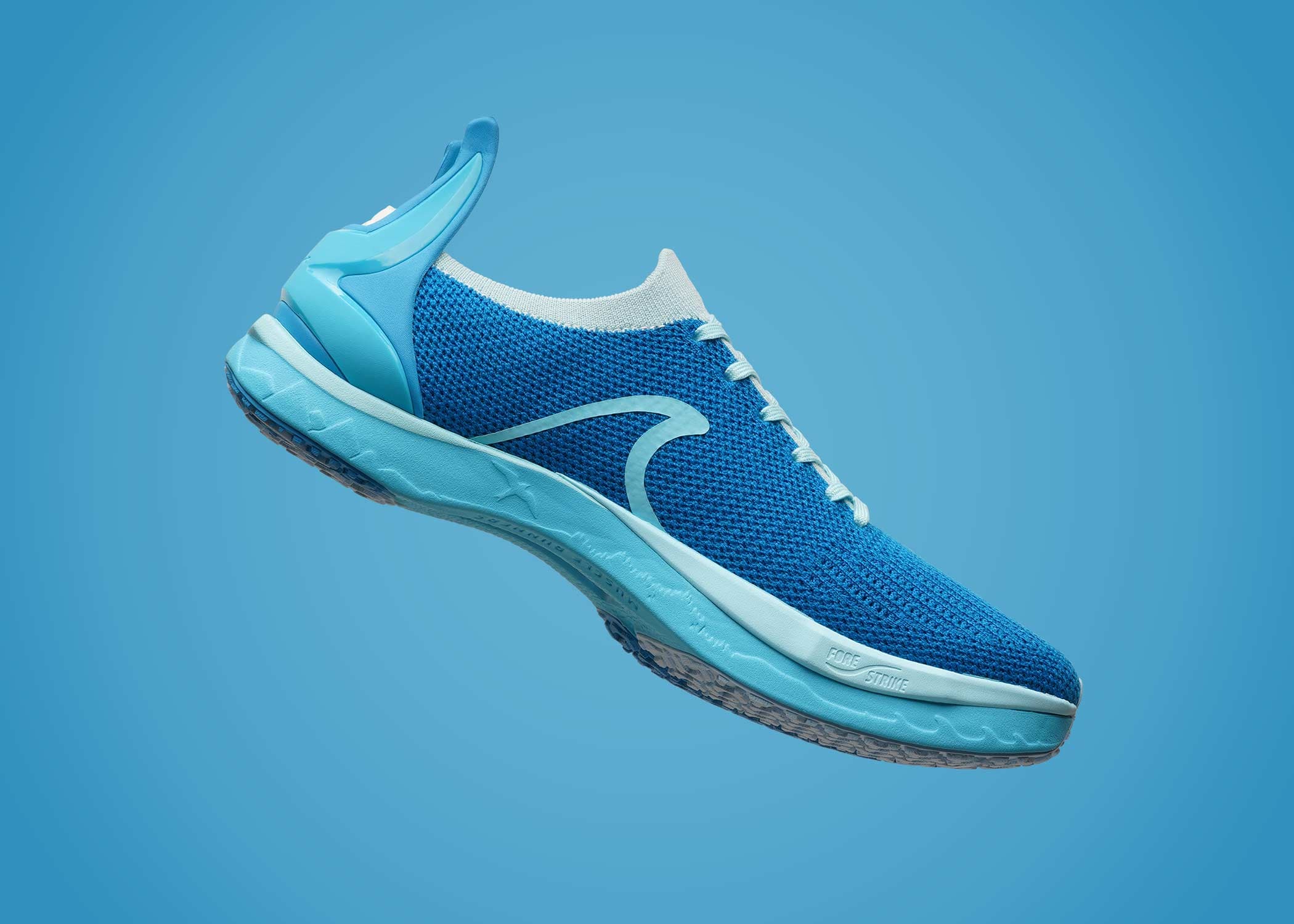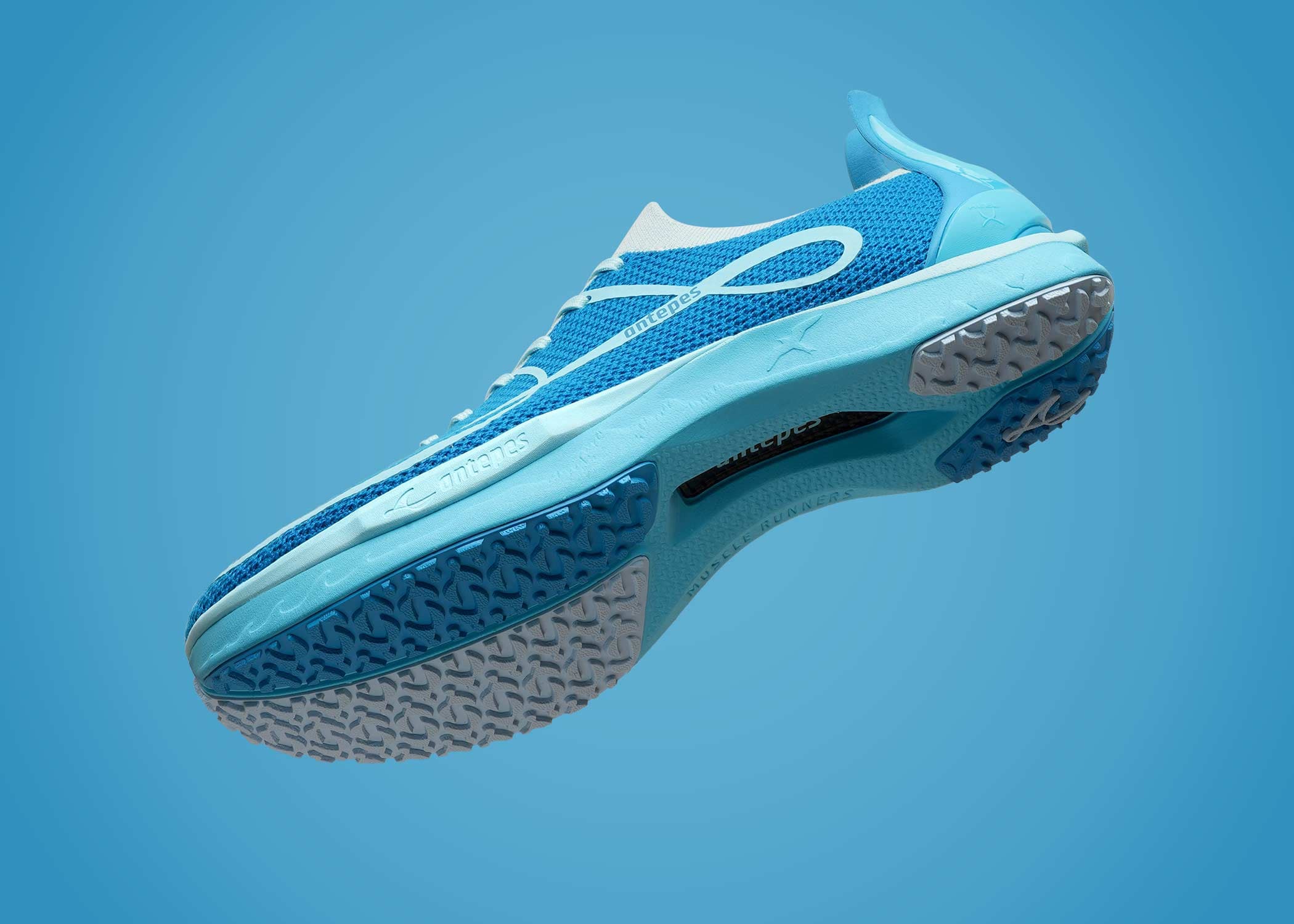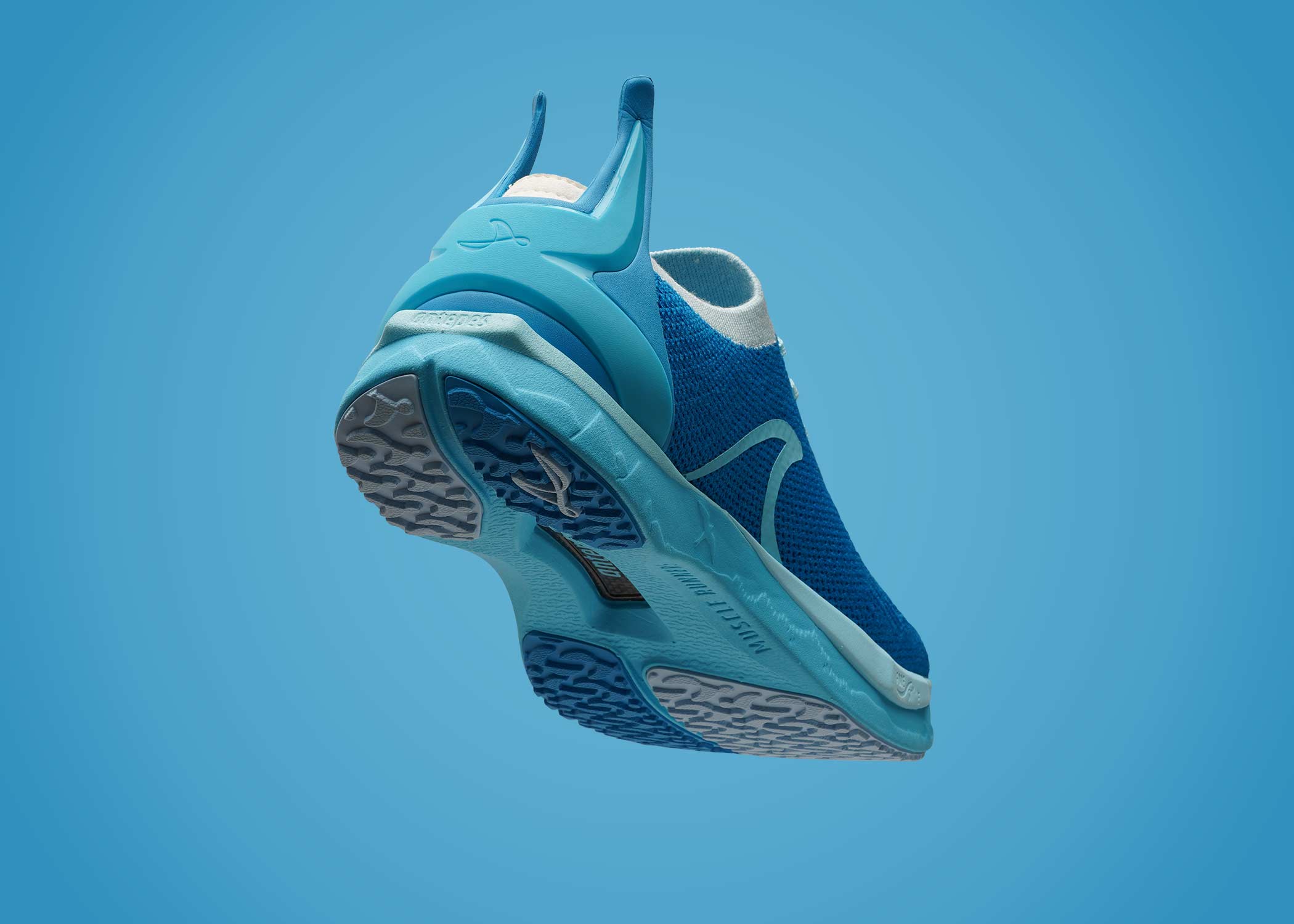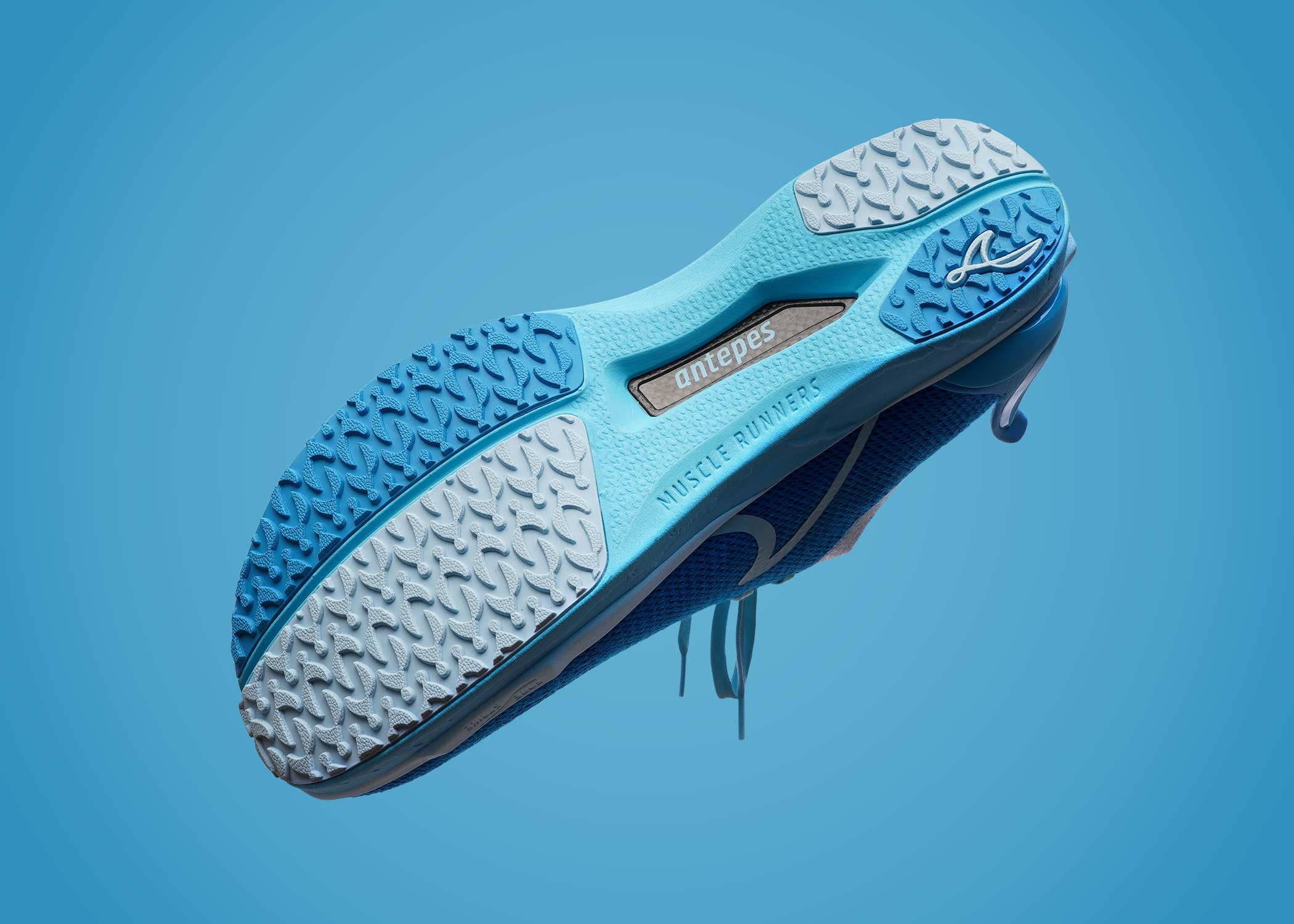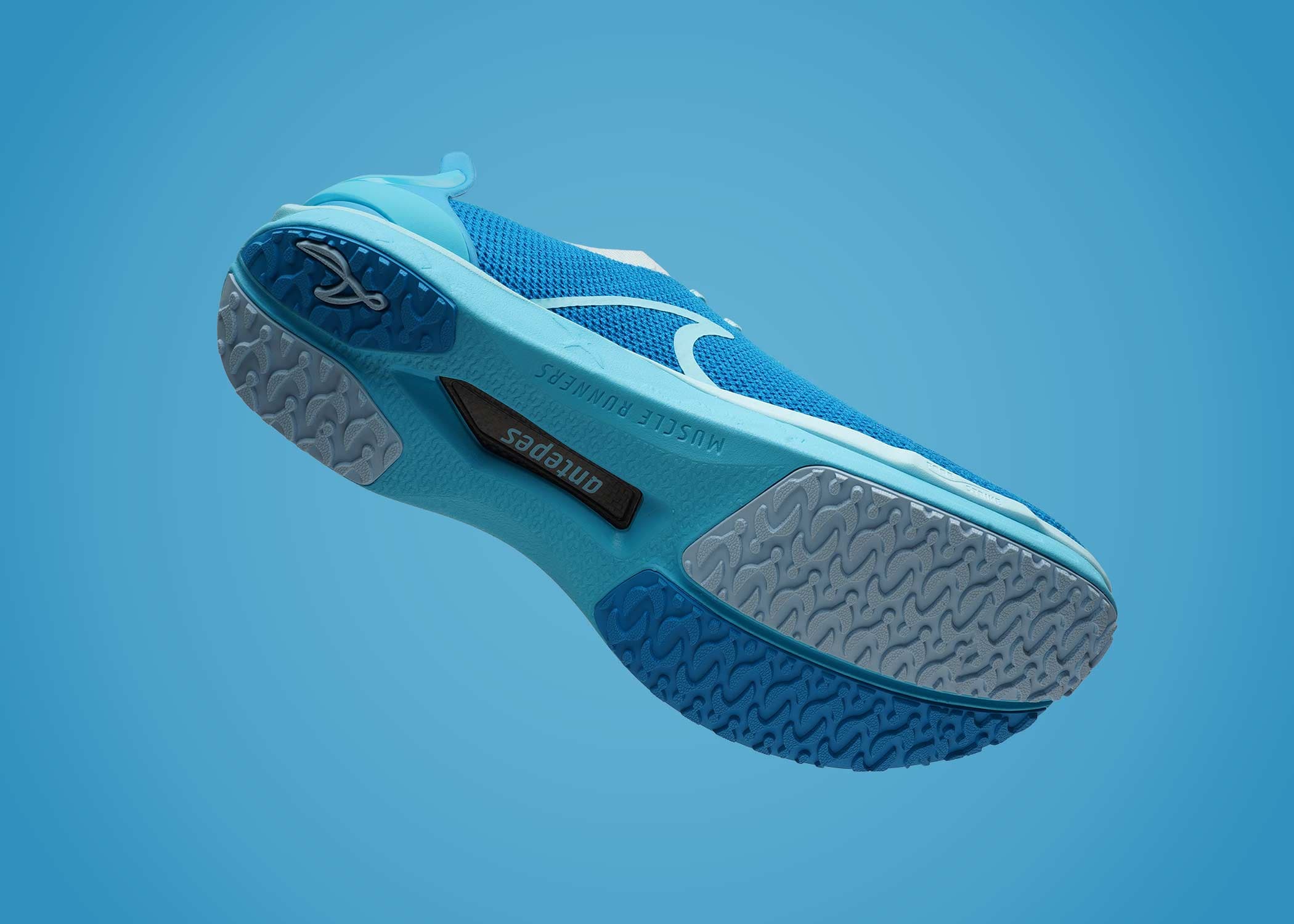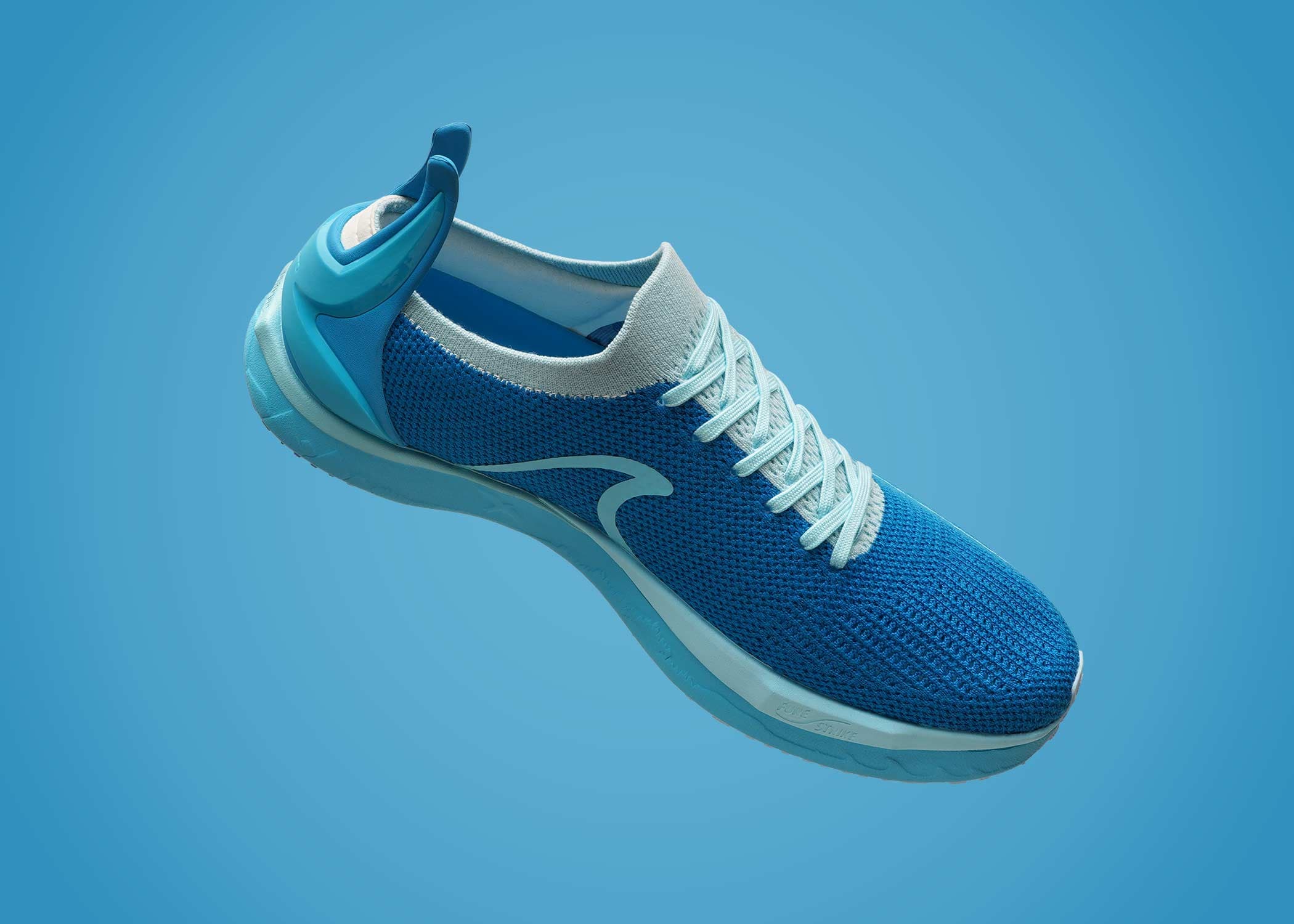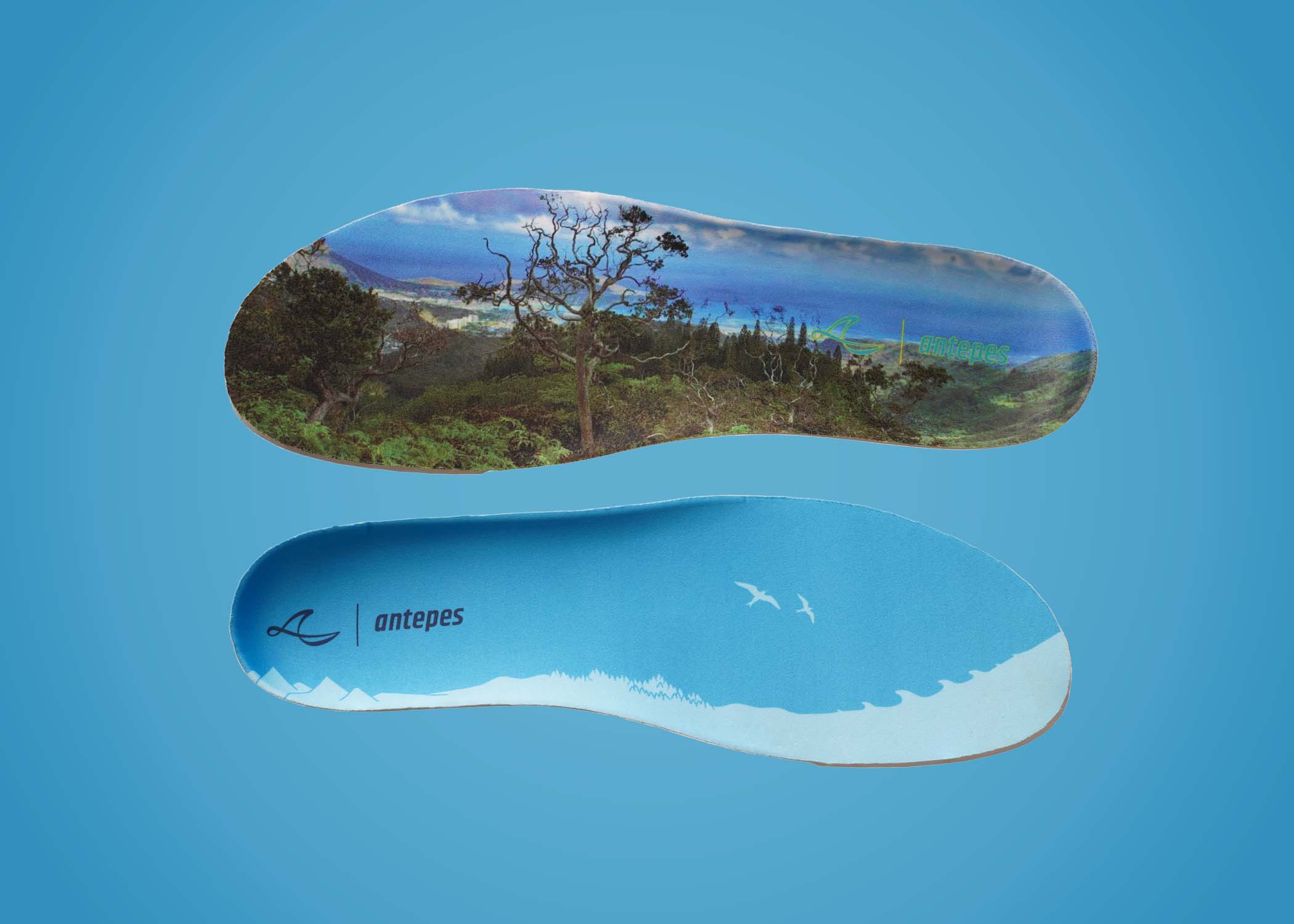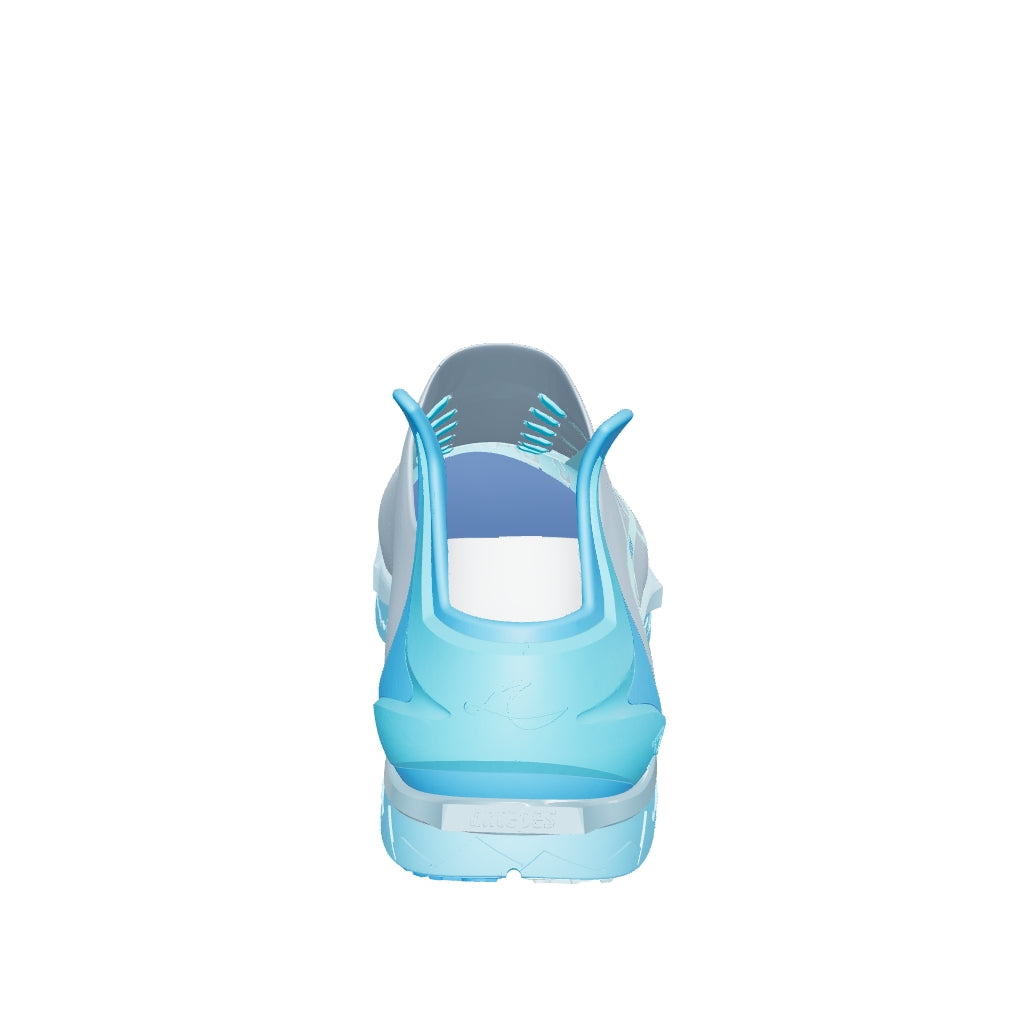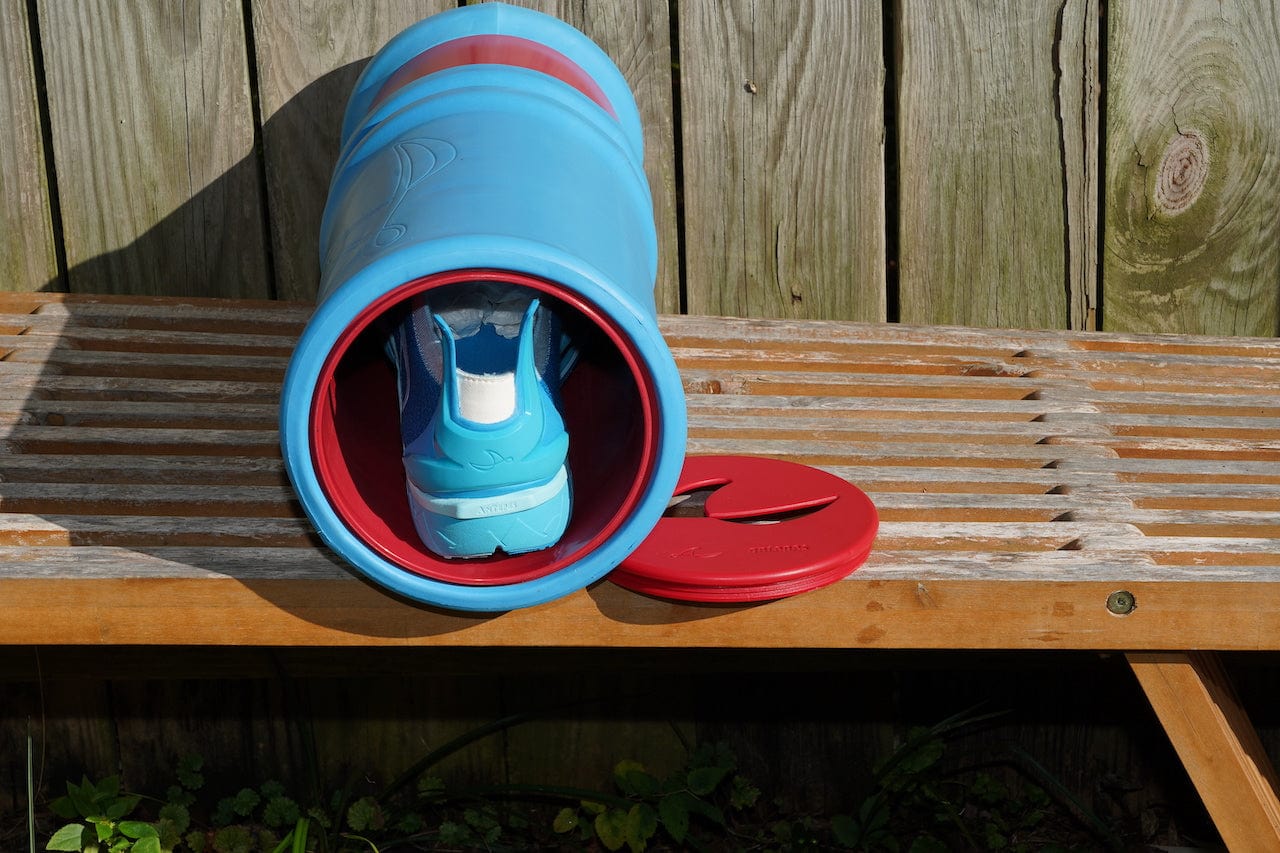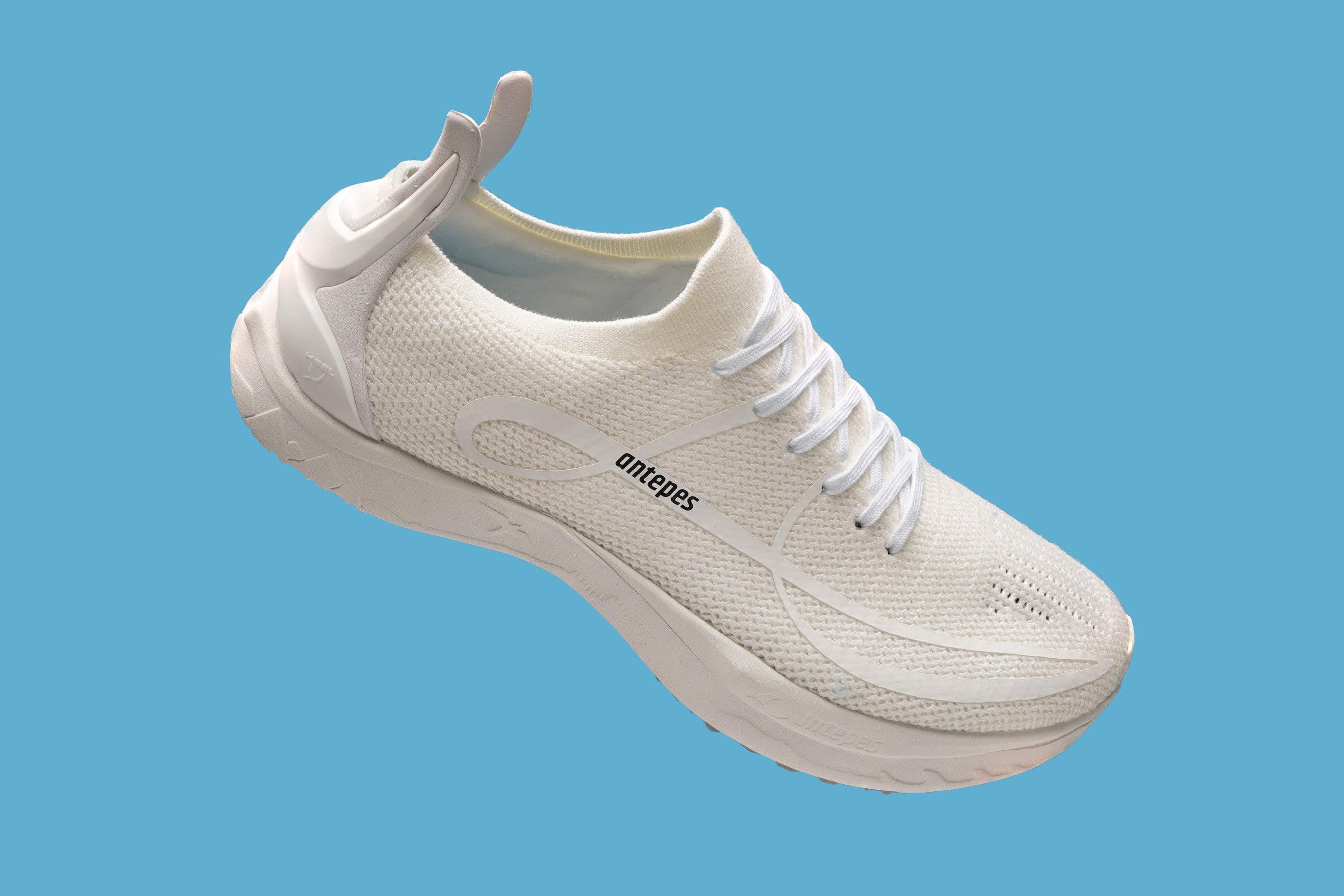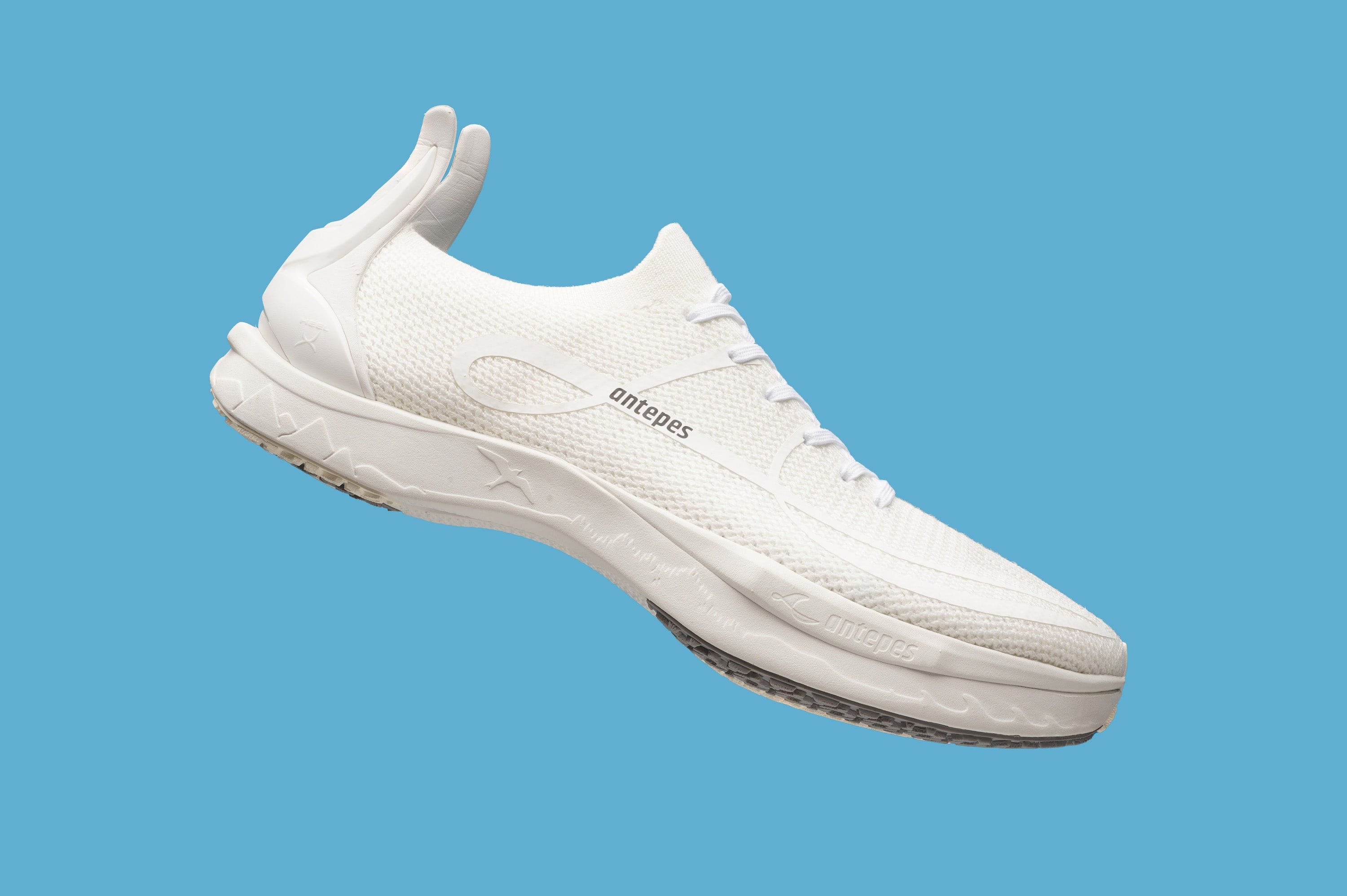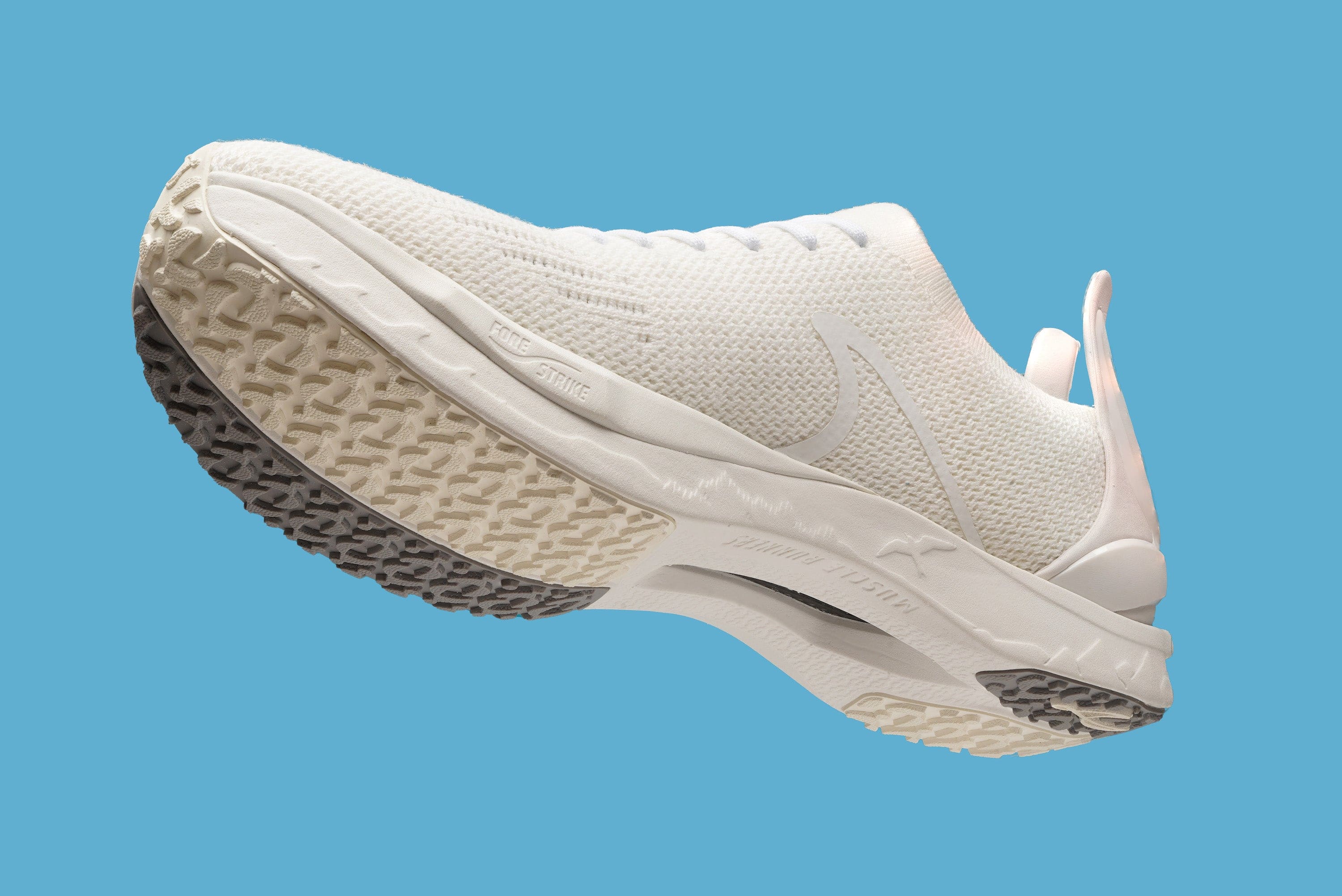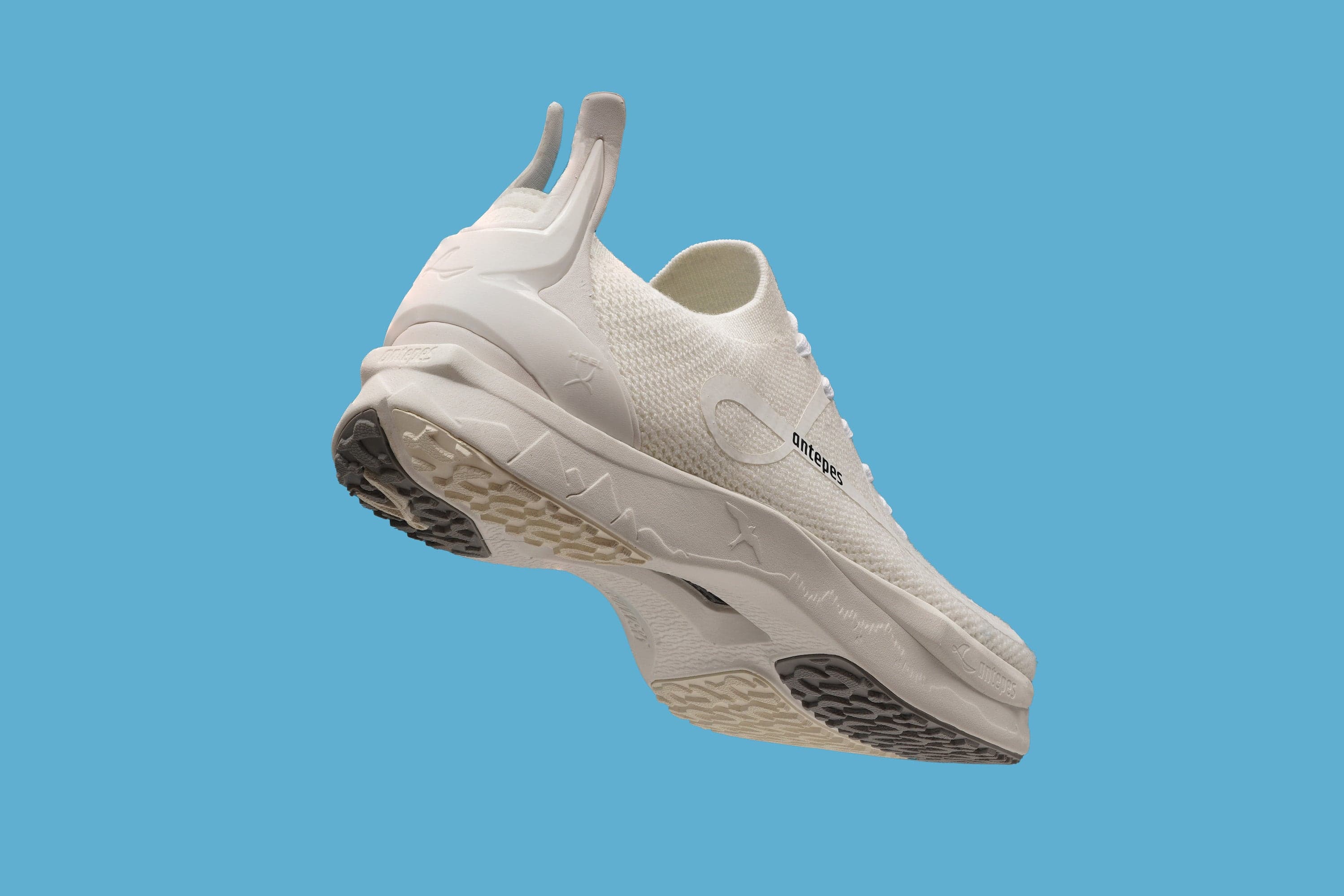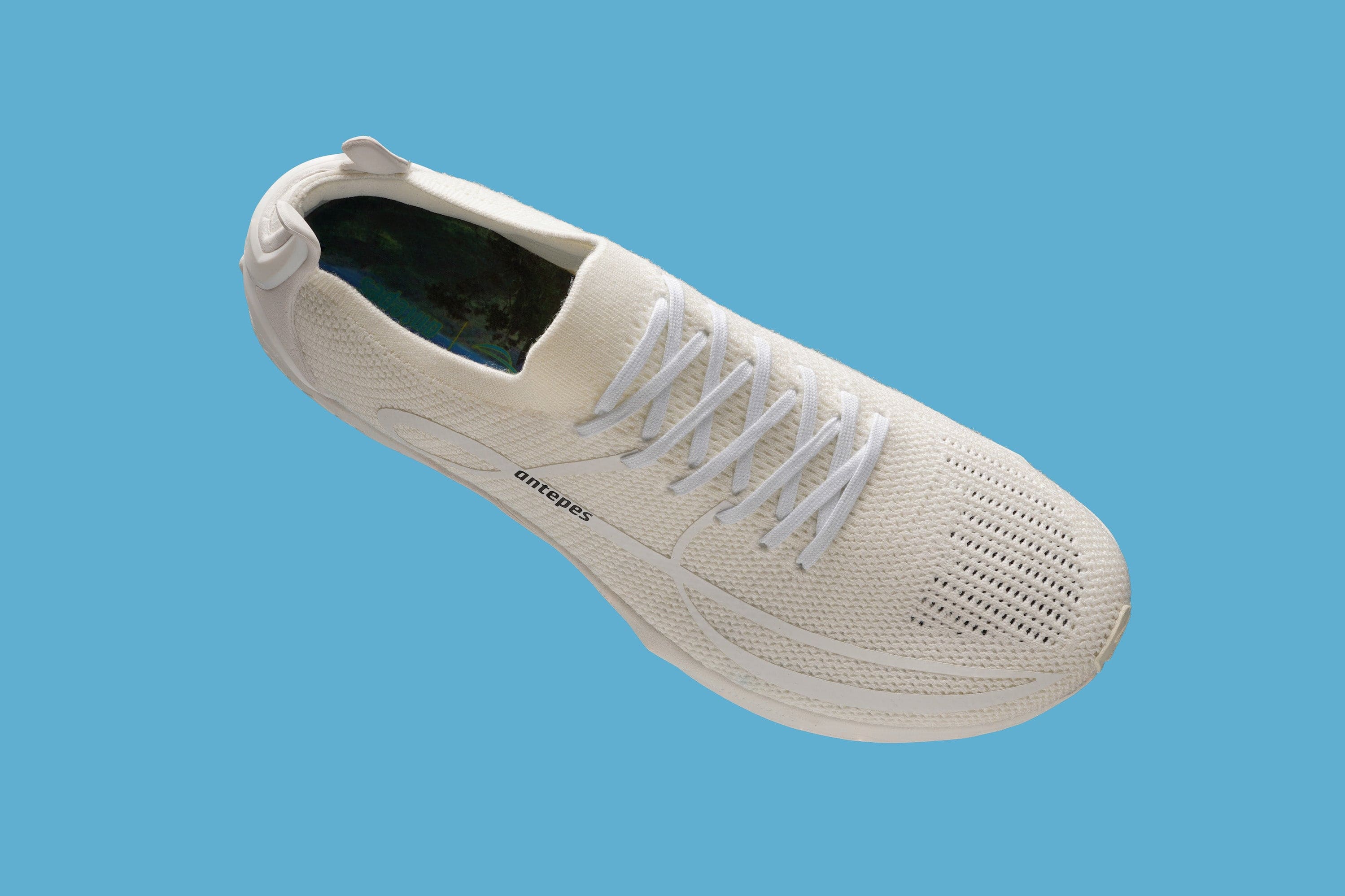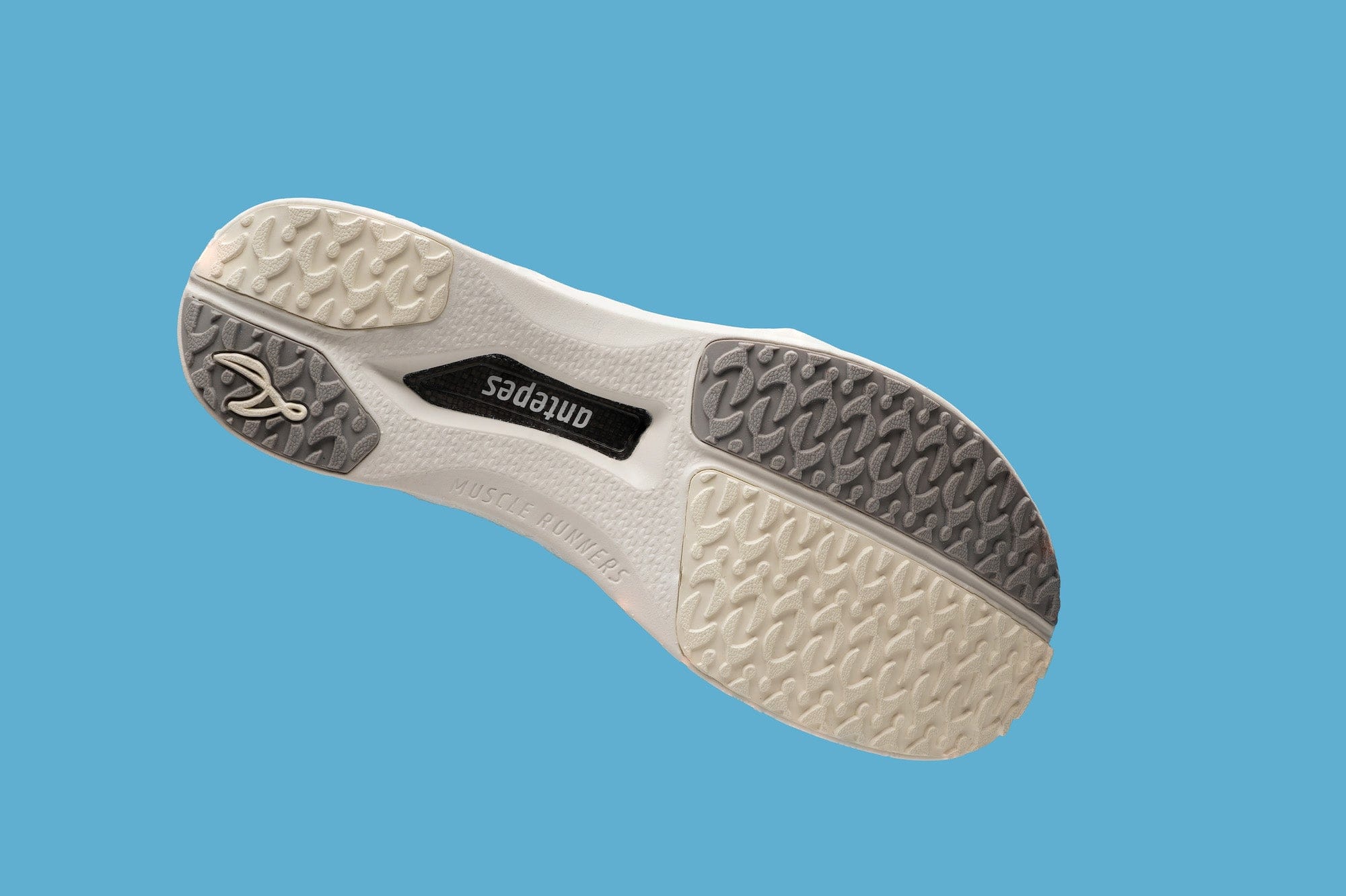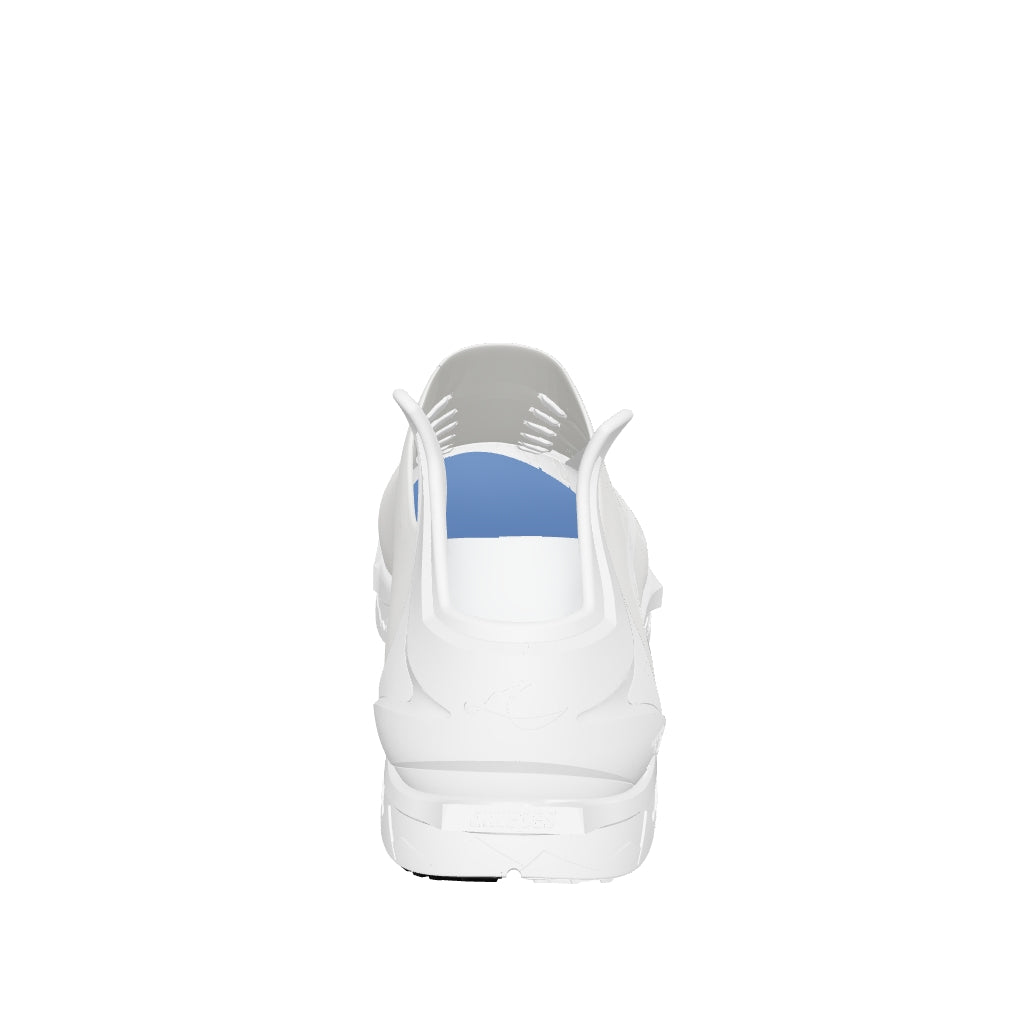Just how do elite athletes change direction so quickly? How do they leave lesser mortals in their dust with their first steps? How do they have skyrocket powered vertical jumps? Well, along with innate talent, much of this incredible movement power will be driven by high intensity plyometric drills. We'll show you some of these - which together with your Muscle Runners - will give you the dynamic edge over your opposition.
Your specifically built-for-speed shoes have been described as the plyometric shoe. So, you're already in a great place to exploit what plyometrics can do for you. These shoes are designed for jumping. There's no squidgy foam like some conventional running shoes, rather Fore-Strike™ and ForeSpring™ technologies combine to launch you from the ground with the quickest and most powerful of reaction forces. This is the result of their carbon-fibre plate technology and TPU foam.
... you should see plyometrics as being able to develop "coiled spring ability"
If you have been following our plyo series (and why wouldn't you be?) you'll know what plyometric drills such as hops, bounds and drop jumps are. However, just in case... you should see plyometrics as developing "coiled spring ability". If you stretch a spring and release it – it will recoil really fast. In doing so much energy is released.
See this as what happens to your legs, for example, when performing a plyo drill and in particular high intensity options. Specifically we are looking at the stretch-reflex. On ground contact from a jump the muscles, ligaments and tendons (soft tissue) of the ankle, knee and hip will go on stretch. This is known as an eccentric muscular action. See this as the spring being pulled to optimum tension. Then and in a split second (akin to the spring’s recoil) the relevant soft tissue will return energy through a rapid-fire concentric muscular shortening action.
The more developed the stretch reflex (also referred to as the stretch-shortening cycle) the faster and more powerful you will be everything else being equal.
The minuscular gap between the stretch and the reflex is known as the amortisation phase. Superior athletes will tend to have a faster amortisation phase and will have greater leg stiffness.
Regular - and the right plyo training - will improve these qualities and develop greater power generation capability.
We have been ranking plyometric exercises in our series by using the description: Light, Medium, High, and Very High
We have said that all tiers are important and that you need to select from them all when constructing a plyo programme for you and your sport. We have also emphasised that it’s the stress on your body which is what makes a plyo drill fit within a specific intensity tier. It does however, make much sense to progress through the tiers to ready yourself for the increased stresses they place. This is especially the case when commencing your plyo journey. So, please make sure you are optimally and specifically conditioned to be able to do the High tier options we describe here. Look out for our Getting Started with Plyo Plan coming soon.
Drop jumps have been a staple of many track and field athletes’ training for decades. They were invented by the Soviets in the Cold War era. They also carried the name the “Shock Method”.
High Intensity Plyo Options
1: Drop Jumps (60cm drop)
Drop jumps have been a staple of many track and field athletes’ training for decades. They were invented by the Soviets in the Cold War era. They carried the name the “Shock Method”. The idea was that when dropping down from a box onto two feet and then reacting as fast as possible to spring up, the athlete would be shocking their legs into greater reactive ability.
Tips: Technically the aim is to react as fast as possible and to minimise amortisation. Emphasise speed over height gained and knee bend. Land on your Muscle Runner's forefoot (and capitalise on all that energy return goodness!). Use your arms to assist.
Do: 4 x 6
2: Speed Bounds
One of the Intermediate tier plyos was bounding. Here you employ the same technique – however, the aim is to turn up the speed dial to go forwards as fast as possible.
Start from standing. Drive one thigh forwards and then when it gets to parallel to the ground drive its foot forcibly down under your hips to contact the ground. Next dynamically extend your leg to drive yourself forward. Immediately repeat the same movement with the other leg. The power must initially come from the hips. Coordinate arms with legs.
Tips: At the start of the drill use a slight forward lean of the torso (this will aid acceleration), however, after the third or fourth speed bound then get your torso upright.
Do: 3-4 x 20m
3: Power hops
Within the intermediate tier plyo options we introduced you to straight leg hops now we introduce power hops. Think of a triple jumper’s hop phase to get an idea as to what is required. The aim is to make big arcs with your foot as you move it from the back of your body to the front. You're going for distance. Ideally you want the foot to pass close to the knee on its forward rotation.
Initially let your arms move as they want with the legs (for balance) – although you may need to elongate their movement. In time you can try a double arm action – again look at what elite triple jumpers do to get an idea as to this technique.
Tips: Keep your torso upright and focus on keeping the same side shoulder to the hopping leg parallel to the ground.
Do: 2-3 x 20m (left and right legs)
4: Forward to up double-foot Jump sequence
Stand with feet shoulder-width apart and bend your knees (do some preliminary swings using your legs and arms should you wish) to then leap forward. Land with minimal knee bend and immediately jump vertically. Repeat this "forward-up-forward-up" sequence.
The transition from the forward to the up jump will require much braking and will boost stopping power. As well as being crucial for field and racket sports players this is also a great way to train to improve fast vertical jump ability i.e. that required by basketball and volleyball players and high jumpers.
Do: 4 x 10 jump-sequence
5: Drop jump, with hurdle jump
Drop down from a suitable box/platform as per exercise 1 landing on two feet. This time though use a 30cm-40cm box. Land with feet parallel and hip-width apart. React as fast as possible to jump over the hurdle (do not set the hurdle too high – we want a fast reaction and clearance not a slow sticky ground contact one).
Tip: Extend your hips to jump higher. So, focus on triple extension - ankles-knees-hips.
Do: 4-6
Make sure you are optimally warmed up for these drills and take plenty of recovery between reps. Do not do when fatigued.



